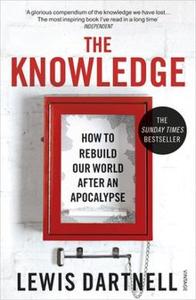
Want to learn the ideas in The Knowledge better than ever? Read the world’s #1 book summary of The Knowledge by Lewis Dartnell here.
Read a brief 1-Page Summary or watch video summaries curated by our expert team. Note: this book guide is not affiliated with or endorsed by the publisher or author, and we always encourage you to purchase and read the full book.
Video Summaries of The Knowledge
We’ve scoured the Internet for the very best videos on The Knowledge, from high-quality videos summaries to interviews or commentary by Lewis Dartnell.
1-Page Summary of The Knowledge
Overview
There are so many potential apocalyptic events that could destroy civilization. They include an epidemic, a meteor strike, or even nuclear war. Any of these could happen at any time and ruin everything we know.
So, what would you do if you were in such a situation? You’d probably want to know some basic survival techniques. What if all of civilization’s technology was destroyed? How would you find food, treat medical issues and stay warm?
In this article, you will learn how to treat water so that it won’t make you sick. You will also learn how to start a fire without matches or a lighter. Lastly, you will find out which drink cures cholera.
Big Idea #1: In the event of a catastrophe, your priorities are shelter, warmth and water.
What would you do if a cataclysmic event occurred? If such an event were to occur, it’s important that you use your time wisely in order for society to rebuild and flourish.





